 Long Term Plan 2021-2031
Budget Prioritisation Workshop - 5 November
Long Term Plan 2021-2031
Budget Prioritisation Workshop - 5 November
Objectives of the workshop
Develop a draft LTP budget, considering:
• rates impact over 10 years
• what this LTP will deliver for our communities
2
Agenda
1.Community context (pre-engagement and economic outlook)
2.Our baseline (work to date, what’s included and rates impact)
3.Current package (where we have got to so far in prioritising
and phasing new initiatives + options)
3
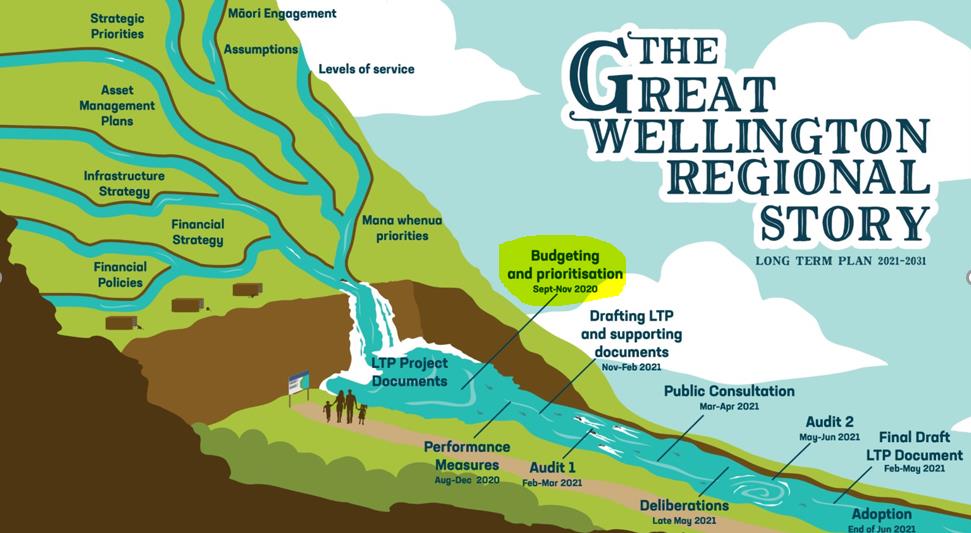
LTP process
We are
here
4
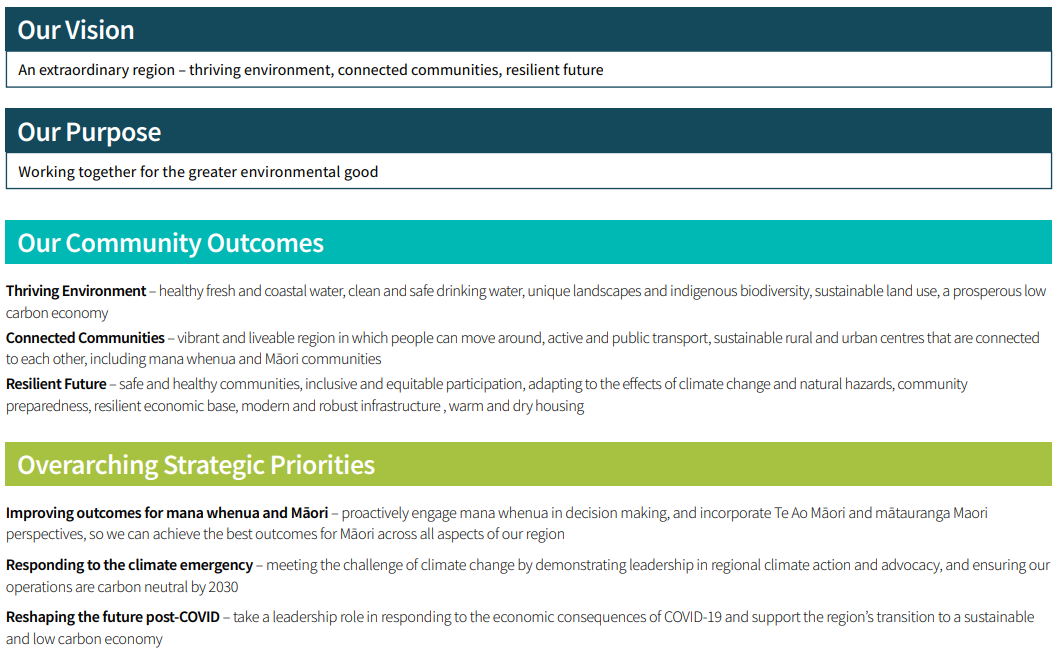 LTP Strategic Framework
LTP Strategic Framework
5
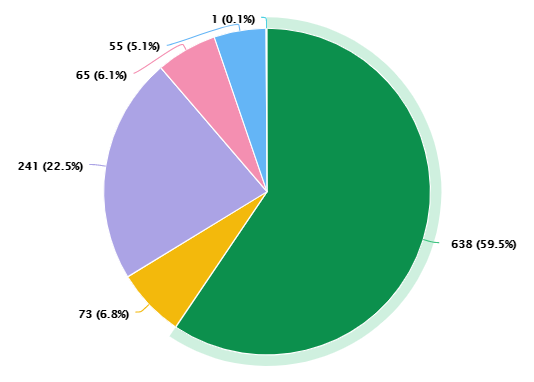
 LTP Early Engagement - ‘Korero Mai, Have your say’
LTP Early Engagement - ‘Korero Mai, Have your say’
• 1,082 responses
•
Respondents location
4,000 people directed to the GW
website
• 182,496 people reached
• 29% of Mana whenua comments
stated our ‘Te Tiriti o Waitangi’
obligations
• Climate change and GW’s
declaration of a climate
emergency is front of mind for
many
6





 LTP Early Engagement - Priorities Supported
LTP Early Engagement - Priorities Supported
• All five key priorities had
Support for the priorities
significant support
• Tackling climate change is
interconnected with our
other priorities
Climate
emergency
response
•
Priorities were strongly interconnected in a holistic web,
Healthy
Public
Environment
Transport
while the majority of the rest indicated strong relationships
between two or three of the priorities
7
Mana Whenua engagement
What mana whenua have told us
• They need surety of funding so they can build capacity to work with GWRC
• They expect all managers to demonstrate how their activities meet the LTP obligation
in terms of partnership
• Mana whenua should be visible throughout the LTP
• They expect greater transparency around budgets for mana whenua activity
• The LTP should be based on kawanatanga principles
8
Mana Whenua engagement
Our response
• Exploring a consolidated funding method of funding mana whenua that will give them
greater autonomy, and which is outcomes focused
• Managers to report on how they are meeting partnership principles in quarterly
reporting
• Greater transparency around budgets for projects that involve mana whenua
9
Mana Whenua engagement – Funding option
How we support mana whenua now
Funding mana whenua into the future
• Capacity and Resource Consent
Two complimentary streams of funding for
funding for each mana whenua entity
each entity:
• Funding for Ara Tahi, Te Upoko Taiao
•
Stream A: Annual consolidated funding of
and Committee represenatives
all the resources they currently get under
resource consent and capacity funding –
• Individual contracts for work on
to be identified in the Long Term Plan
resource consents
•
Stream B: Specific project funding for
• Individual contracts for service
each mana whenua entity – e.g. whaitua
•
implementation – to be identified in the
Funding via Te Hunga Whiriwhiri that
Long Term Plan
mana whenua can apply for
Outcome: Mana whenua build internal capacity and capability, adding value for them and G
10 W
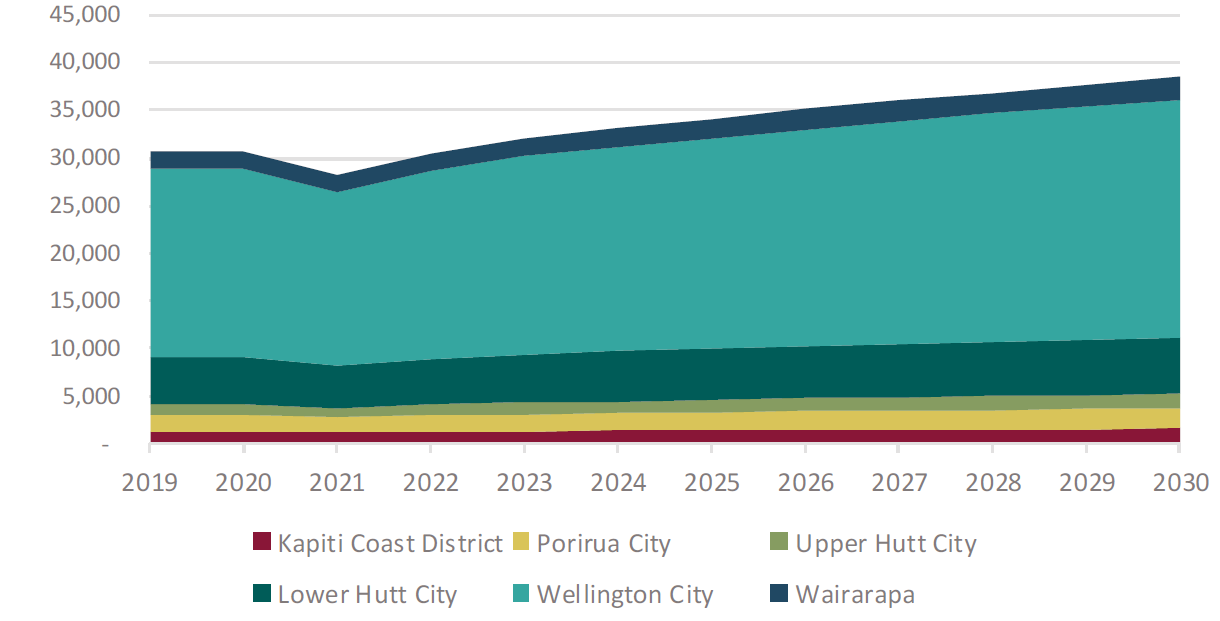
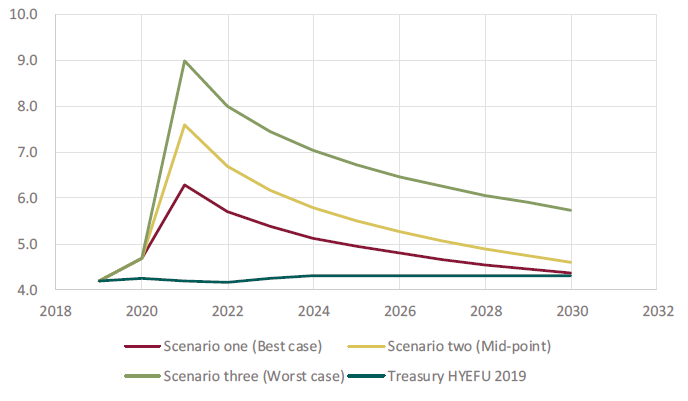 Economic outlook
GDP forecast ($million) – Wellington region
Unemployment Scenarios (%) - Wellington region
Economic outlook
GDP forecast ($million) – Wellington region
Unemployment Scenarios (%) - Wellington region
11
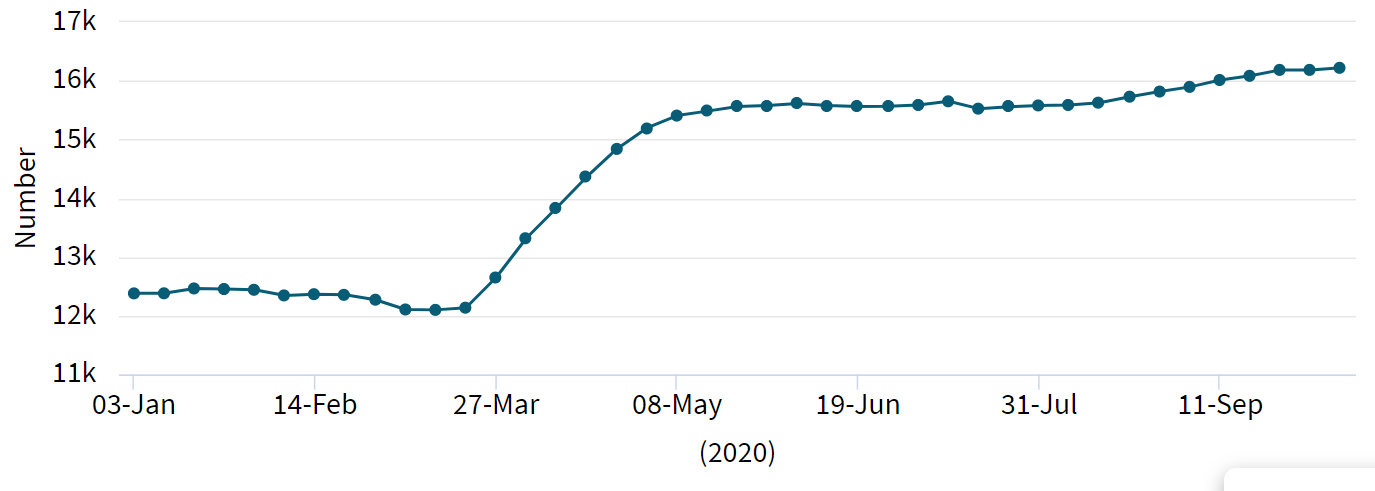
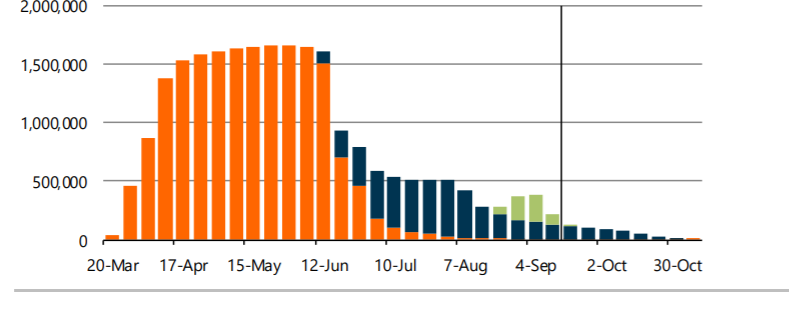
 Economic outlook
Number on jobseeker support benefit – Wellington region
Number of jobs supported by wage subsidy – New Zealand
Economic outlook
Number on jobseeker support benefit – Wellington region
Number of jobs supported by wage subsidy – New Zealand
12
Focus areas for the budget process
• Delivering progress upfront on our overarching strategic priorities
Responding to the climate emergency
Improving outcomes for mana whenua and Māori
Supporting the region through the COVID-era
• Phased approached to Council’s key result areas
• Community affordability
• Responding to national direction
• Maintaining levels of service, assets and infrastructure
• Deliverable CAPEX programme
13
 Questions?
Questions?
Budget prioritisation – process to date
How did we develop our current budget package?
1. Developed our baseline for the next 10 years
2. Sought savings and phasing within the baseline
3. Identified new initiatives
4. Prioritised and phased new initiatives
5. Identified further savings options for consideration
15
Process to date – developing the baseline
We developed our baseline for the next 10 years
We took our current Annual Plan as a starting point, and adjusted for
•
Unavoidable increases (e.g. known rent reviews, contractual cost escalations
and reviews, salary increases, insurance costs increases, critical asset
maintenance)
•
Known decreases (e.g. one-off items, items no longer required, known
savings such as contract rate reductions)
•
Other justifiable changes approved (e.g. approved business cases and
contractual commitments/agreements – including Jobs for Nature, 98 EV
buses, ERRA)
16
Process to date – finding savings in the baseline
… and sought savings and phasing opportunities within the baseline
To relieve baseline rates pressure, we assessed our work programmes to identify
• discretionary spend that could be cut or re-phased
• alternative funding sources
• deliverability challenges that may benefit from re-phasing
• reallocation of funding to high priority areas
17
Savings applied to the baseline
Public Transport – $16m per annum
• Maintain Rail Renewals at current budget levels and reassess Renewal priorities ($5m p.a)
• Keep Insurance contributions to Partners at current levels and discuss future options at national
level ($3m p.a)
• Stop further Snapper development on the current network ($2.5m p.a)
• Defer Phase 2 of Bus Network review for the rest of region ($2.5m p.a)
• Suspend ongoing service level enhancements and timetable changes. ($1m p.a)
• Review of all Capital expenditure, phasing and deferring non critical projects including the new
RTI system; National ticketing and infrastructure projects ($4m)
• Analysed historic actual costs to budget and reduced associated costs in operations ($2m p.a)
• Debt funded LGWM project over 10 years, removed from the baseline and included as a new
initiative for the first three years
18
Savings applied to the baseline
Environment & Flood Protection
• Reserves $0.4m and Predator free Wellington $0.2m
• Review of capital expenditure, including $2.2m reduction of LWVD capex for 21/22 to 24/25
• Review of opex phasing and deferring $0.2m of Whaitua planning & implementation to 22/23
and 23/24
• Review of external revenue and cost recovery allocation
Regional Strategy and Partnerships
• WREDA funding reduction $0.3m
• Reallocation to maintain Climate Change levels of service
• Reduction in Ara Tahi expenditure of $0.05m
19
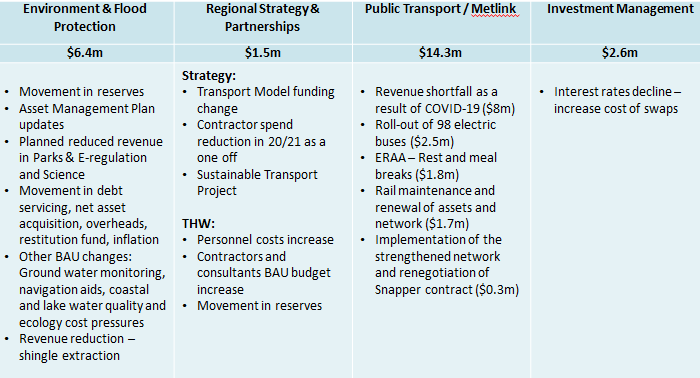 Major baseline drivers (year 1)
Major baseline drivers (year 1)
20
 Baseline movements 2020/21 to 2021/22
17.6%
3%
Baseline movements 2020/21 to 2021/22
17.6%
3%
21
Financial tools
Estimated rates reduction from financial tools
Yr 1
Yr 2
Yr 3
Y4-Y10
$'m
%
$'m
%
$'m
%
%
Debt Funding
Public Transport fare revenue gap
8.0
-4.5%
6.0
2.6%
4.1
1.1%
7.4%
Public Transport business case project
1.5
-0.9%
1.5
-0.7%
1.5
-0.5%
-1.1%
More cost effective option to use than debt by approximately 2% over 3
Reserves
years (1.5% average over 10 years)
$7.7m at end
23/24 for
Public Transport reserves
1.5
-0.9%
0.75
-0.4%
0.75 -0.4%
utilisation
Loan Life
Riverlink loan extended by 5 years
0.5
-0.3%
0.62
-0.4% 0.709 -0.4%
-2.65%
22
Rates % increase baseline comparison
20.0%
15.0%
10.0%
5.0%
0.0%
2021/22
2022/23
2023/24
2024/25
2025/26
2026/27
2027/28
2028/29
2029/30
2030/31
-5.0%
-10.0%
Baseline
Baseline adjusted
23
 Questions?
Questions?
Process to date – new initiatives
We identified new initiatives in areas requiring additional funding (on
top of the baseline) to meet priorities, challenges and expectations -
led by our new strategic framework and LTP assumptions
… and prioritised and phased them, considering our strategic
priorities, significant risks, financial constraints and deliverability of the
package
25
Public Transport
Summary of new initiatives
• Ambitious decarbonisation programme for bus (B2)
• Strengthened customer experience through improvements in smarter
connections, on-board information and stations
• Decarbonisation programme for rail (R1), primarily based upon new rolling
stock for the Lower North Island
(Appendix 1)
26
Regional Strategy & Partnerships
Summary of new initiatives
• Building capacity so that mana whenua can engage and partner with us
• Meeting our LGWM commitments
• Joint Committee to oversee implementation of regional growth framework
Note: Climate Change Regional Strategy is not included in package (200k yrs 1 & 2). It is
likely this will be developed through the Wellington Regional Growth Framework
(Appendix 1)
27
Let’s Get Wellington Moving
•
Programme outcomes (preferred options and sequencing) and local funding share
with WCC to be determined in first half of 2021 – after consultation document issued
•
Placeholder approach for GWRC and WCC Long Term Plan
– Years 1 to 3: Continuation of Relationship and Funding Agreement interim funding
shares
2021/22
2022/23
2023/24
GWRC 20% share of business case costs ($m)
10.0
10.8
8.7
Rating impact ($m)
0.5
1.0
1.5
Rating impact (%)
0.4%
0.8%
1.1%
– Years 4 to 10: ‘Envelope’ approach based on Programme Business Case funding
methodology
28
Environment & Flood Protection
Summary of new initiatives
• Response to national direction (focus years 1-3)
– meeting statutory obligations and phased approach to compliance
– aligned with Council priorities to protect and restore freshwater, biodiversity &
ecosystem health
• Progressing Council’s carbon positive and restoration goals (P1.5)
• Maintaining levels of service to deliver core environmental
responsibilities
(Appendix 1)
29
Further initiatives – Not yet included in package
Options
Scale
Reason for exclusion
Fit for future
Analysis needed
Not yet fully scoped
Further accelerated
In addition to P1.5 figures:
Possible deliverability issues
restoration (P2)
$2.1m yr 3 onwards
Parks network plan
Analysis needed
Not yet fully scoped
implementation
Enviroschools funding
$90k yrs 1 to 3
Levels of service maintained through current
structure amendments
$250k yr 4 onwards
structure
30
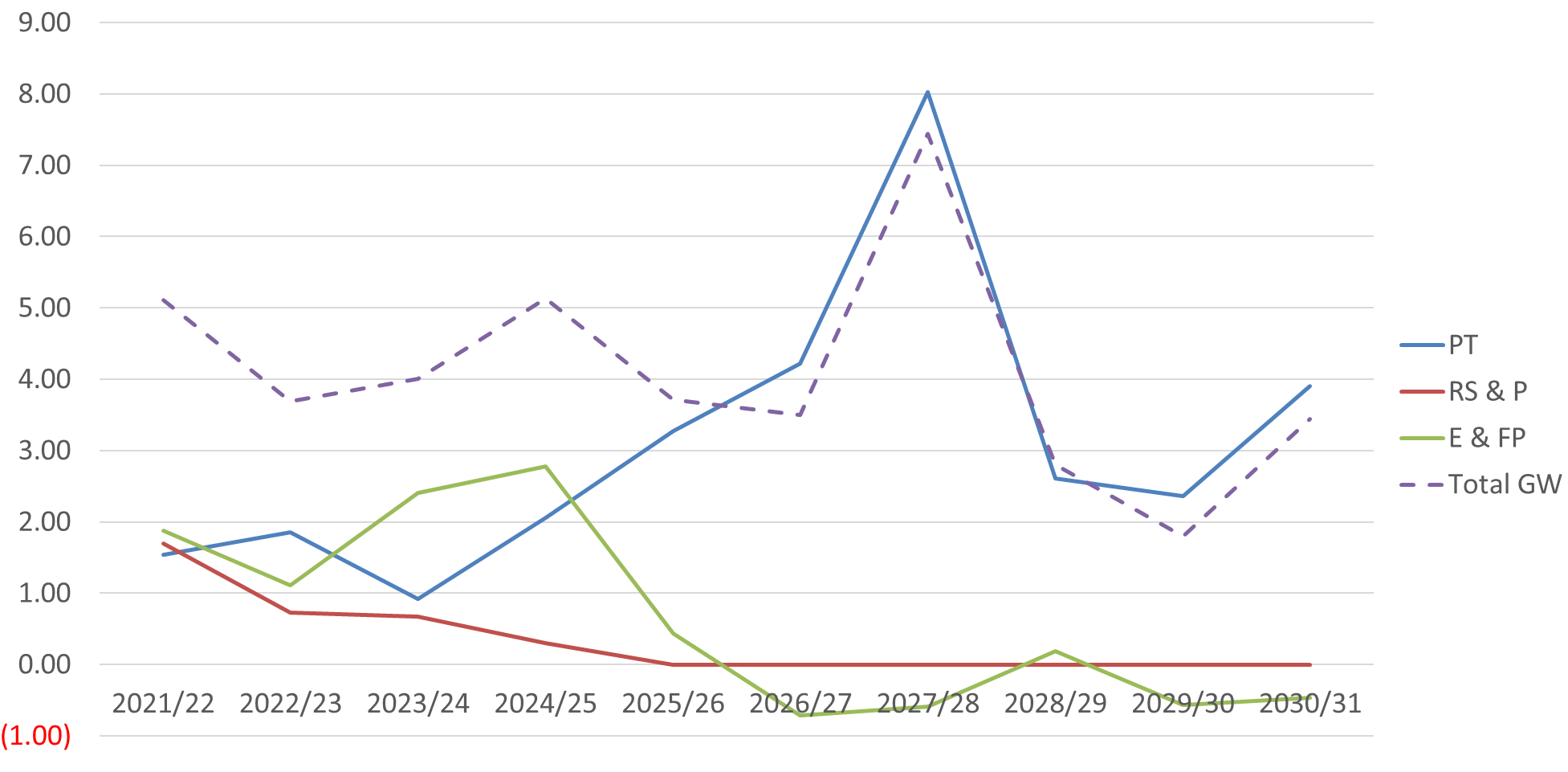 New initiatives – increase per year ($million)
New initiatives – increase per year ($million)
31
Rates % increase comparison
20.0%
15.0%
10.0%
5.0%
0.0%
2021/22
2022/23
2023/24
2024/25
2025/26
2026/27
2027/28
2028/29
2029/30
2030/31
-5.0%
-10.0%
Baseline
Baseline adjusted
Baseline + adjustments + new initiatives
32
 Questions?
Questions?
Further savings options for consideration
A lot of work has already been completed to find savings and re-phase work where
possible
To significantly reduce the rates impact at this stage, we would need to find savings by:
• Significant levels of service reductions
• Stopping major programmes
• Re-phasing Council commitments
• External funding requirements
An alternative approach (if significant savings cannot be found) is to front load the first
year of the LTP (2021/22), explain clearly why a major re-adjustment is required and
thereby reduce the rates impact on the following years of the LTP
34
Savings options – new initiatives
Options
Scale
Considerations
Slow down
(P1) $1.6 million yr 4,
Restoration of up to 1120 hectares of Parks land over the
carbon positive
$800 k per year from yr 5
next 15 years (235ha less than P1.5 option, over a longer
(reduction from P1.5)
time period). Note LCAF funding in yrs 1-3 for both options.
goals
B1 only replaces diesel buses with electric at end of life and
(B1) $70 million over the term of
the LTP
represents only a 5% reduction in the GW group's carbon
(reduction from B2)
footprint in 2029-30 compared to 2018-19, whereas B2
represents a 30% reduction
These could be reduced further (i.e. B0, P0, R0) and / or
balanced with greater carbon offset purchases
35
Savings options – new initiatives
Options
Scale
Considerations
Assume %
Total new resourcing in
Sector-wide resourcing/funding issue. Significant level of
government funding
Environment + Flood protection:
uncertainty regarding attainment of government funding.
to assist GW response $1.8 million yr 1
to national direction
$2.8 million yr 2
$5 million yr 3
Joint Committee
$200 k
Project funding would need to be identified from individual
reduction of project
(Reduce scale of new initiative
local governments as and when required
funding
from $400 k)
Māori economic
$100 k
This would require strategy implementation funding to be
development
(remove new initiative)
sourced from iwi and central government
36
Savings options – Levels of service
Options
Scale
Considerations
Environment & Flood Protection group reductions – Total $1.34 million
Parks
$400 k
Lower service against a key strategic priority. Fail to meet full public expectations
regarding recreational offering, and asset decline
Stop submissions
$100 k
Significantly reduce opportunity to input to national processes. No GW submission input
for local council consenting
Reduce consent processing
$100 k
Lengthen processing time frames, and increase failure to meet statutory limits
Reduce science and
$200 k
Fewer evidence based decisions. Potential for unchecked environmental effects through
investigations
reduced monitoring
Reduce Whaitua science
$100 k
Lower service against a key strategic priority. Less evidence-based science to inform
Whaitua freshwater limits and objectives
Reduce Whaitua process
$100 k
Lower service against a key strategic priority. Move away from current full community
committee process framework; limit level of input, and potential reduce scale of WIPs
Biodiversity/biosecurity
$340k
Negative environmental impact, community expectations, conflicts with strategic
priorities
37
Savings options – other
Options
Scale
Considerations
Wellington NZ funding $1 million reduction
Could shift allocation model to a contestable fund for
reduction
(Currently granted $4.3m per specified projects (avoiding overhead costs)
year)
Sell port shares (to
Analysis needed
$4m per annum dividend over yrs 1-3 of LTP. Analysis and
51%)
consultation required. Sale impact yr 3 earliest.
Initiate a review of the Analysis required
Review and re-negotiation of contracts so GWRC can start to
existing PT operating
receive the financial benefits of the lower maintenance
costs associated with our decarbonisation activities
model contracts
Ngauranga to Petone
$ 1 million in years 1 & 2
NZTA are the primary funders, GW contribution represents a
cycle/walkway
contribution (debt funded in baseline)
Additional revenue
$560k yr 1
Possible negative reactions to charge increases (RMA
$330k yrs 2 and 3
charging). Riverlink revenue uncertain as acquisitions may
(Environment)
not proceed.
38
Savings options – other
Options
Scale
Considerations
Flood Protection
Up to $1 million per year for
Once this reserve is exhausted, Council would need to fund
contingency reserves
three years
the general rate share (e.g. 50%) of minor flood damage
(Reserve is $3.1m, 200k per
repairs from surplus or other means (borrowing)
year already allocated )
Public Transport
$1 million per year
Currently using $1.5 million yr 1, $0.75 million yrs 2 and 3,
reserves
with $7.7 million remaining by yr 4
Interest rate swaps
$1-2 million in years 1 and 2
Renegotiate fixed interest rates with lenders. Likely to
reduce cost in the short-term and increase longer-term costs
39
 Given the context and detail discussed today, what is Council’s
Given the context and detail discussed today, what is Council’s
direction regarding
• the preferred rates pattern?
• adjustments to the new initiatives package?
• preferred savings options?
40
 Next steps
Next steps
41
























